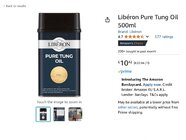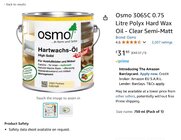A few clarifications on the chemistry involved that may help. First, "aliphatics" just refers to various lengths chains of C and H. Think from gasoline, mineral spirits are shorter chains. The get longer up to waxes - longer changes are still aliphatics but not as volatile or as good a solvent. "Aromatics" include hydrocarbons that include rings of carbon atoms. Most things from petroleum contain a mixture.
As I understand it though, aromatic compounds, based on the benzine ring, are more volatile and offer better solvent capability. Aliphatics, even shorter chains, are not as reactive and don't offer the same kind of solvent capability. IIRC, and its been a while since I actually studied organic chem, it has to do with the Pi bond, and how Benzene based compounds have better Pi bond structure and are better able to interact with the Pi bonds of other organic compounds, than most aliphatic compounds?
As far as efficacy with oil based finishes...my experience has been that the "green" "solvents" are all but useless, as far as power as a solvent goes. The more green, the less volatile, thus I guess the longer the compounds, and the less effective. I didn't know as much about "mineral spirits" before I started this thread, but apparently there are a number of varieties, some containing only low volatility aliphatic compounds, some containing higher volatility aliphatic compounds, some containing more aromatic compounds, and some containing a majority of aromatic compounds. Classic paint thinner is apparently more on the side of up to 60% aromatics vs. aliphatics, hence its effectiveness. Green "paint thinner" is mostly long chain aliphatics, and even water (!!) and sometimes are only compatible with water based, latex and other type paints (and are not just useless, but potentially detrimental as a solvent for oil based finishes.)
The problem I think a lot of colorado (and probably California) residents are running into, is that the odorless mineral spirits sold here now, are longer chain very low volatility aliphatic hydrocarbons, which offer very low solvent capability and often muck up oil based finishes, hurting and prolonging drying time, rather than doing anything useful. Those more volatile (shorter chain hydrocarbon) compounds, especially the benzine based aromatics with their strong pi bonding, make for much better and more effective solvents. Some mineral spirits contain a better mixture of hydrocarbons, for sure. The "Green" mineral spirits, odorless, generally do not. It probably differs from state to state, what kind of mineral spirits are generally available. Some states don't really restrict VOCs, and you can still even get nahptha (VM&P), which hasn't been available in colorado since 2022, if not even before that (I can't recall seeing it since I first started woodworking in 2020), which as I understand it is mostly the shorter chain hydrocarbons (5-6) including rings, which works really well as an oil solvent.



